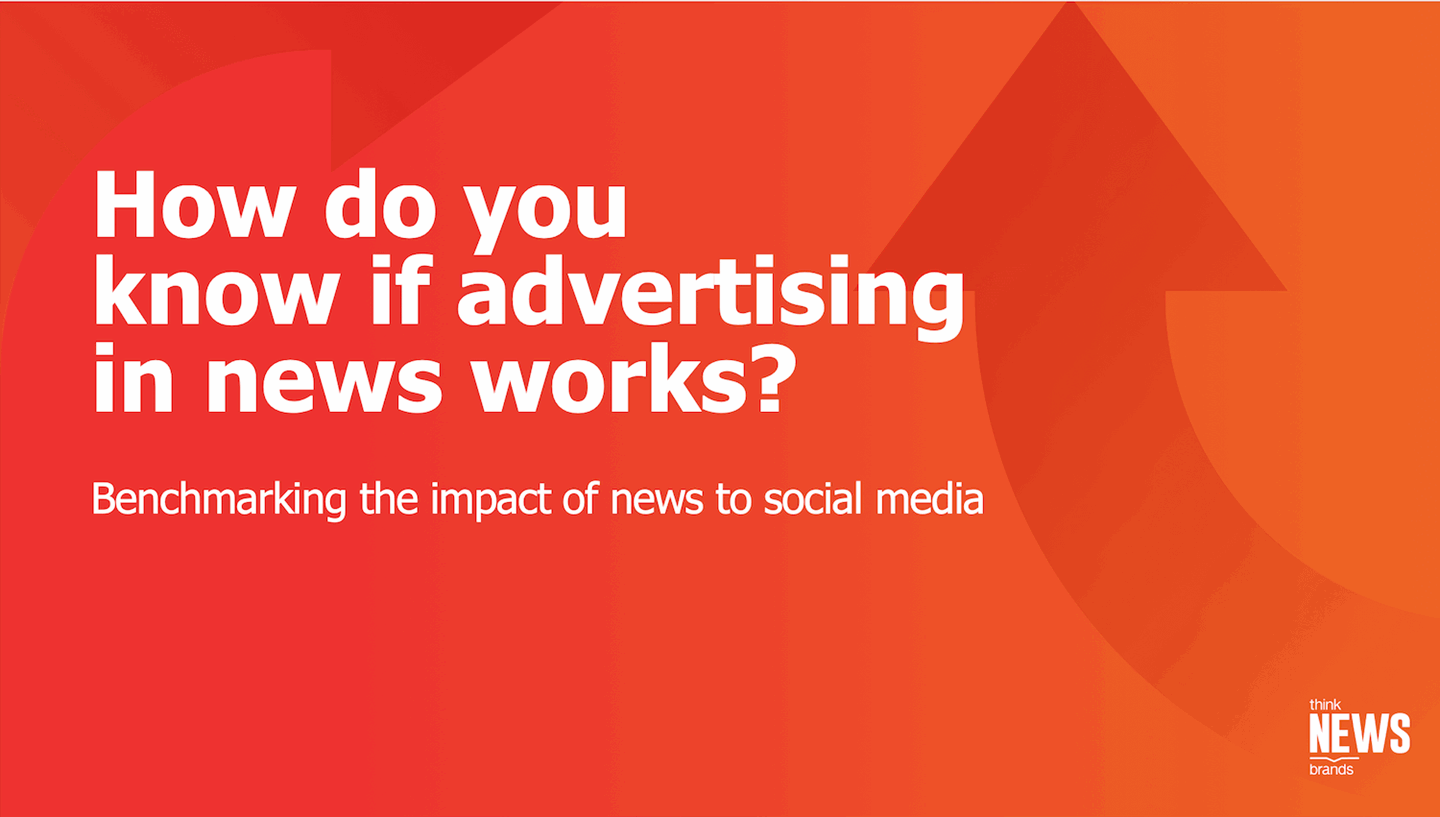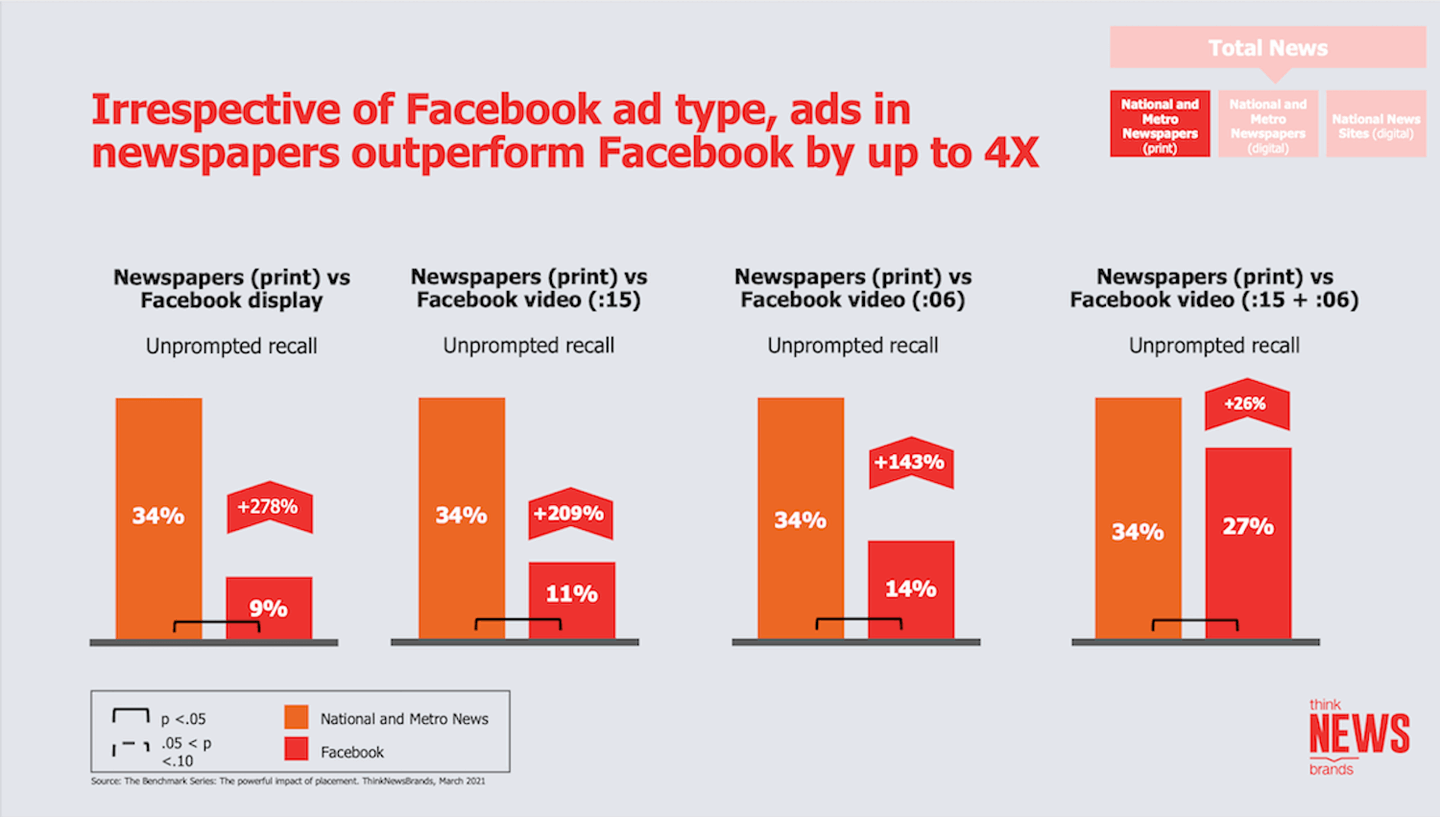News ads imprint on your memory
What is it about news channels that give brands such salience? Dr Varan says it’s all about the power of context. ‘The overarching finding of the research is that national and metro news, in print and digital form, are extremely effective at embedding brands in people’s memories,’ he explains. ‘The reason for this is that when people consume news content, they enter an active and alert state of mind, and this carries over to the advertising on the channel.’ Dr Varan was most struck about the superior performance of print ads. ‘Just to see how much stronger newsprint was vis-a-vis a Facebook ad, you’re getting a much greater impact. A print ad is even outperforming a video ad. That’s pretty telling. A print ad is very rich. Compare that to the fleeting experience of seeing an ad and scrolling through it.’ 1
The printed page provokes a reaction through its very tangibility. The print reading experience commands your time and attention, so it figures that any ad that runs alongside it will make an impact too. It’s this awareness that figures in cementing a brand in your memory and can ultimately influence your perception of that brand.
Trust in news is growing
While the report concludes the success of brand recall around ads in news channels is due to the fact that news is cognitively engaging, could it also be down to the trust generated by established news channels in this post-truth era when social media is a hotbed of misinformation? Denise Turner, Director of Research and Insight at Newsworks - the UK’s marketing body for the national news publishers - thinks it’s a factor. ‘In my view there are a number of reasons why brand recall is higher,’ she says. ‘Readers actively choose to engage with the content. It’s where they go to understand the why behind the what, and what it means for them. And trust is a key driver of success for brands that choose news brands. We’ve seen that in a number of studies we’ve carried out, and it’s particularly the case since the pandemic. We know for instance that 66 per cent of people said they value journalism more since the pandemic, and that’s even higher for younger people.’2
Indeed, Kantar’s recent research into The Trust Gap reveals that connected consumers trust the news and information they see in print and broadcast media more than on social media. And more people distrust social media than trust it.
Addressing the perception gap
Yet despite the mounting evidence to the contrary, a recent Ebiquity study reveals there’s still a perception by marketers that digital is more effective than print. So how does the print industry redress the balance? ‘The Ebiquity results point to a shortfall in awareness,’ says Steve Goodman. ‘It is the role of the press marketing bodies to address those client perceptions and challenge them with new and compelling research and case studies. In the UK, both Newsworks and Magnetic continue to do an excellent job of this, however the noise from other media, and in particular digital, can be somewhat overwhelming. It is important therefore that media owners and agencies play their part too. So many agencies are putting digital at the core of everything they do, often at the expense of other media. As a result, the skills required to plan and buy press are becoming ever increasingly absent at media buying agencies.’
Marketers should wake up to print’s value
Dr Varan believes that despite the study being researched around Australian consumers, the results would be similar if applied globally. ‘The numbers might not be exactly the same, but the trend would be,’ he says.1
ThinkNewsBrands general manager Vanessa Lyons believes the study should be a wake-up call for marketers who are blinkered in their view of advertising in news channels, both print and digital. ‘Wouldn’t you rather reach your audience in an active, receptive state than a blink-and-you’ll-miss-it scroll? The findings are clear: as an advertising channel, news has the power to increase the propensity to purchase due to the halo created by the engaging, trusted and professionally produced content,’ she says. ‘This research, combined with the impressive daily reach of news, its vast and growing audience, and clear cross-platform performance, make a compelling case for marketers to reappraise their perceptions of news.’3
The sheer scale and scope of this cross-platform comparison is unprecedented, making it one of the most compelling cases yet for the immense power of print. Marketers, the evidence is clear. It’s time to sit up and pay attention to print!
1 Source: Colin Kirkland, Mediapost.com
2Source: Newsworks, World Without News
3Source: Adnews.com.au






